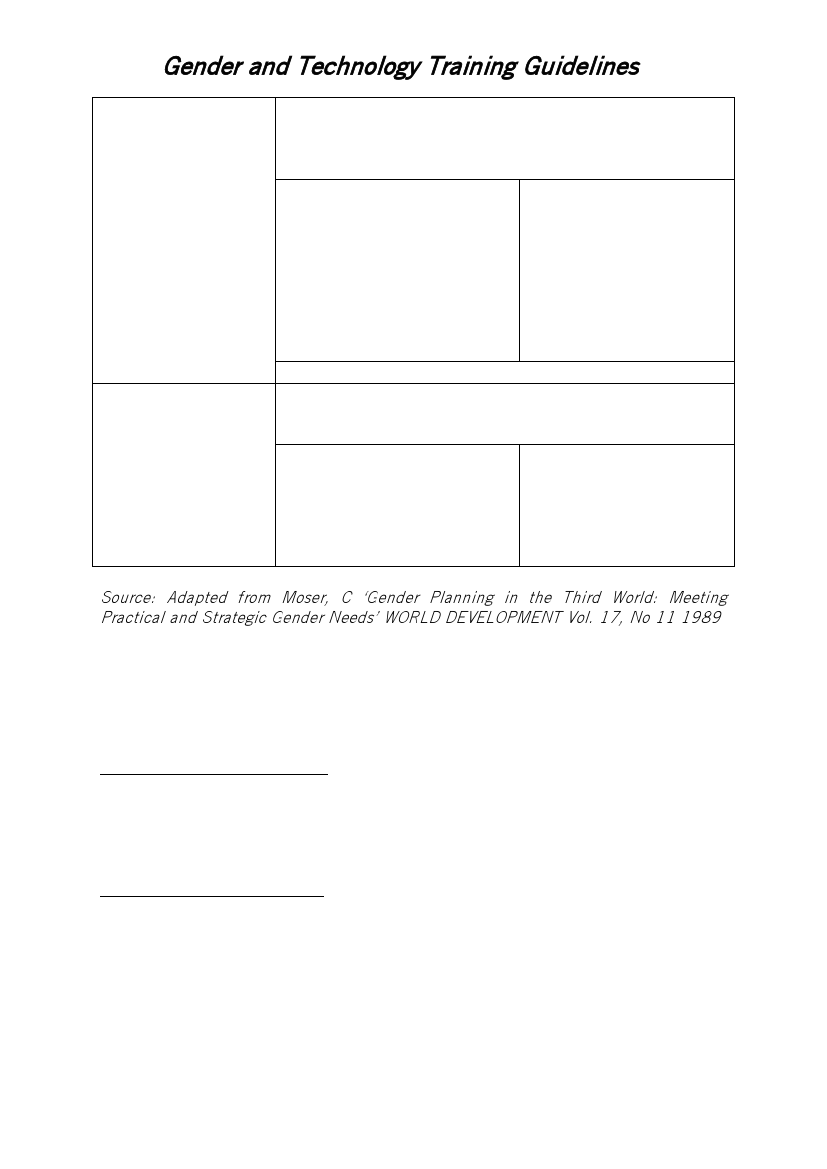
Gender and Technology Training Guidelines
COMMUNITY
MANAGING ROLE
Is an extension of reproductive role into community action
because goods and services they need in reproductive role is
not provided/badly provided
Increase in situation of scarcity
Tendency to be involved
in unpaid community
provision and maintenance of
goods of collective
consumption
and basic services
Tendency to be involved
in unpaid community
provision of goods of
collective consumption and
basic services
COMMUNITY
MANAGING ROLE
Organised at formal political level
i.e. traditional decision making structures or political parties
Tend to be leaders by
virtue of relationship
with other men
or are rank and file
Tend to be leaders
(especially in
traditional
decision making
structures)
Source: Adapted from Moser, C ‘Gender Planning in the Third World: Meeting
Practical and Strategic Gender Needs’ WORLD DEVELOPMENT Vol. 17, No 11 1989
GENDER NEEDS
Women and men have different needs, because they have different needs in society.It is
useful to distinguish between two types of gender needs
Practical Gender Needs (PGNs) Are the needs identified by women and men which
arise out of the customary gender division of labour. PGNs are a response to
immediate perceived necessity, identified within a specific context. They are often
concerned with inadequacies in living conditions such as water provision, health
care, employment.
Strategic Gender Needs(SGNs) reflect a challenge to the customary gender relations
and imply changes in relationships of power and control between women and men.
SGNs which women identify arise from women’s recognition and challenge to their
subordinate position in relation to men in their society, for example, equal access to
employment, equal pay equal legal rights. SGNs which men identify arise from men’s
recognition and challenge to their exclusion from domains which customary male
roles impose and which contribute to the perpetuation of women’s subordination, for
example, sharing child care. SGNs are context- specific.
Source: Levy, C and Beall, J, Gender Planning Training Materials, 1992.
45